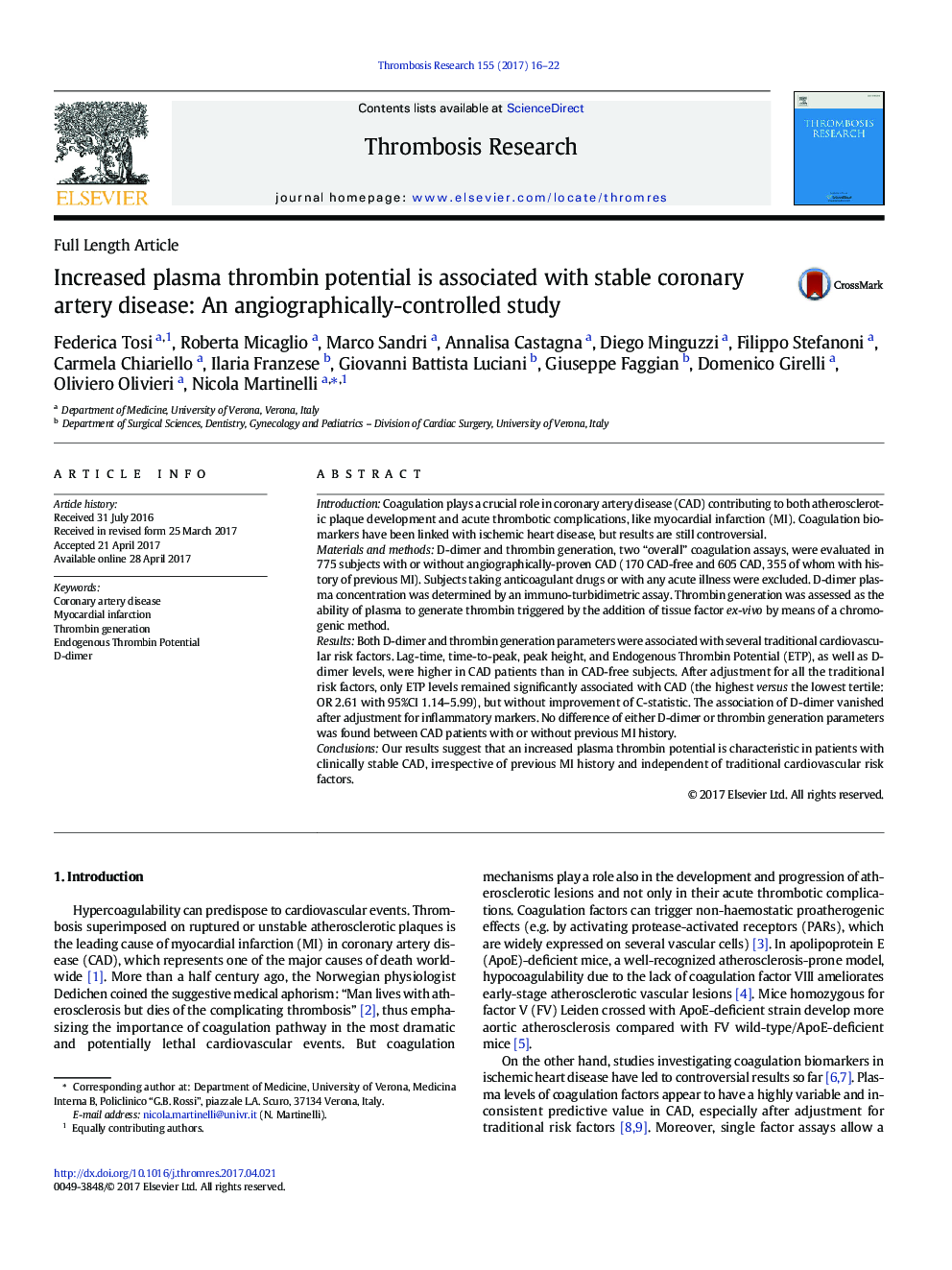| کد مقاله | کد نشریه | سال انتشار | مقاله انگلیسی | نسخه تمام متن |
|---|---|---|---|---|
| 5622018 | 1579188 | 2017 | 7 صفحه PDF | دانلود رایگان |
- The clinical significance of coagulation biomarkers in CAD remains elusive so far.
- The association between D-Dimer and CAD may be mediated by low-grade inflammation.
- An increased plasma thrombin potential is characteristic in patients with stable CAD.
- Plasma thrombin potential is similar in CAD patients with or without prior MI.
IntroductionCoagulation plays a crucial role in coronary artery disease (CAD) contributing to both atherosclerotic plaque development and acute thrombotic complications, like myocardial infarction (MI). Coagulation biomarkers have been linked with ischemic heart disease, but results are still controversial.Materials and methodsD-dimer and thrombin generation, two “overall” coagulation assays, were evaluated in 775 subjects with or without angiographically-proven CAD (170 CAD-free and 605 CAD, 355 of whom with history of previous MI). Subjects taking anticoagulant drugs or with any acute illness were excluded. D-dimer plasma concentration was determined by an immuno-turbidimetric assay. Thrombin generation was assessed as the ability of plasma to generate thrombin triggered by the addition of tissue factor ex-vivo by means of a chromogenic method.ResultsBoth D-dimer and thrombin generation parameters were associated with several traditional cardiovascular risk factors. Lag-time, time-to-peak, peak height, and Endogenous Thrombin Potential (ETP), as well as D-dimer levels, were higher in CAD patients than in CAD-free subjects. After adjustment for all the traditional risk factors, only ETP levels remained significantly associated with CAD (the highest versus the lowest tertile: OR 2.61 with 95%CI 1.14-5.99), but without improvement of C-statistic. The association of D-dimer vanished after adjustment for inflammatory markers. No difference of either D-dimer or thrombin generation parameters was found between CAD patients with or without previous MI history.ConclusionsOur results suggest that an increased plasma thrombin potential is characteristic in patients with clinically stable CAD, irrespective of previous MI history and independent of traditional cardiovascular risk factors.
Journal: Thrombosis Research - Volume 155, July 2017, Pages 16-22
